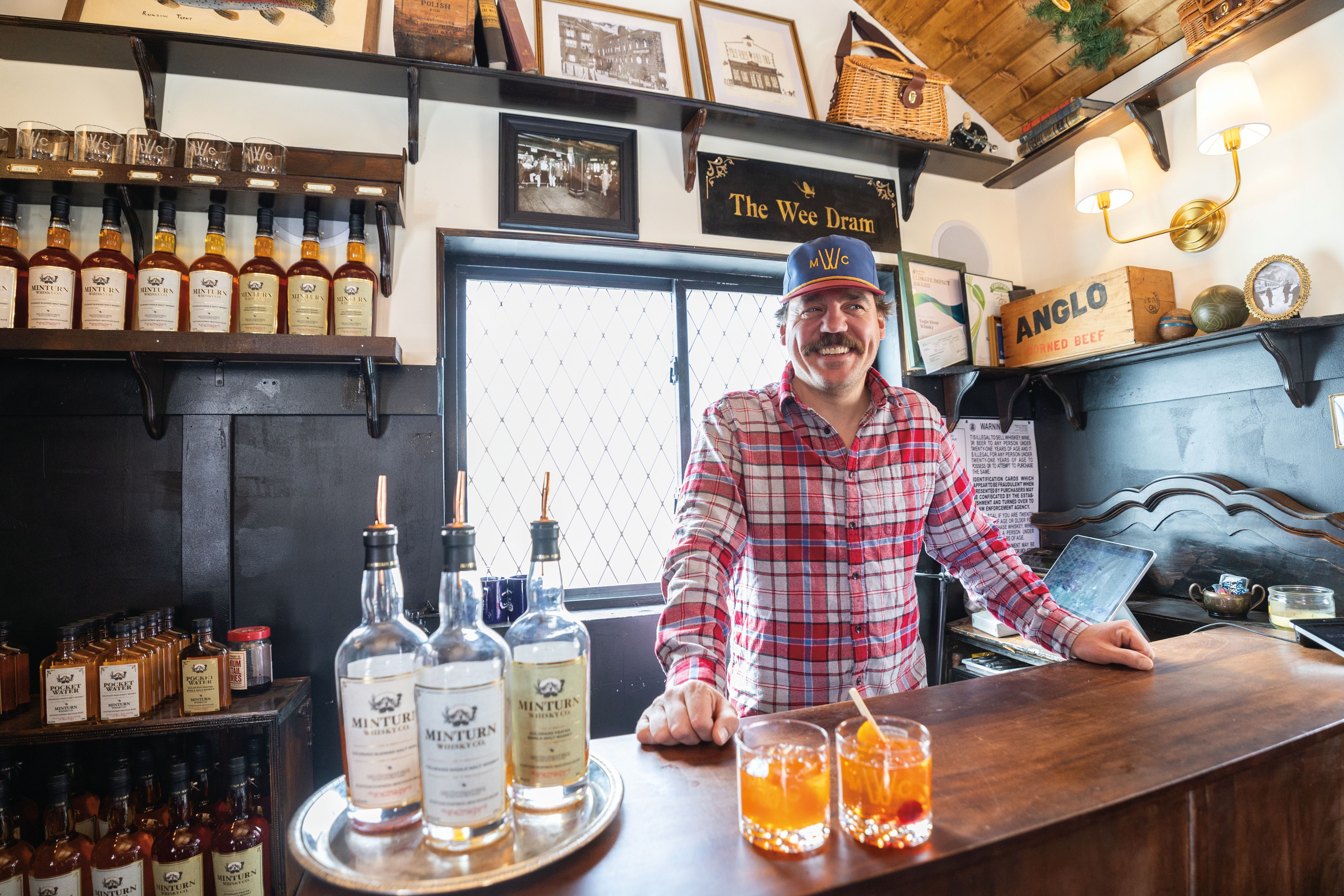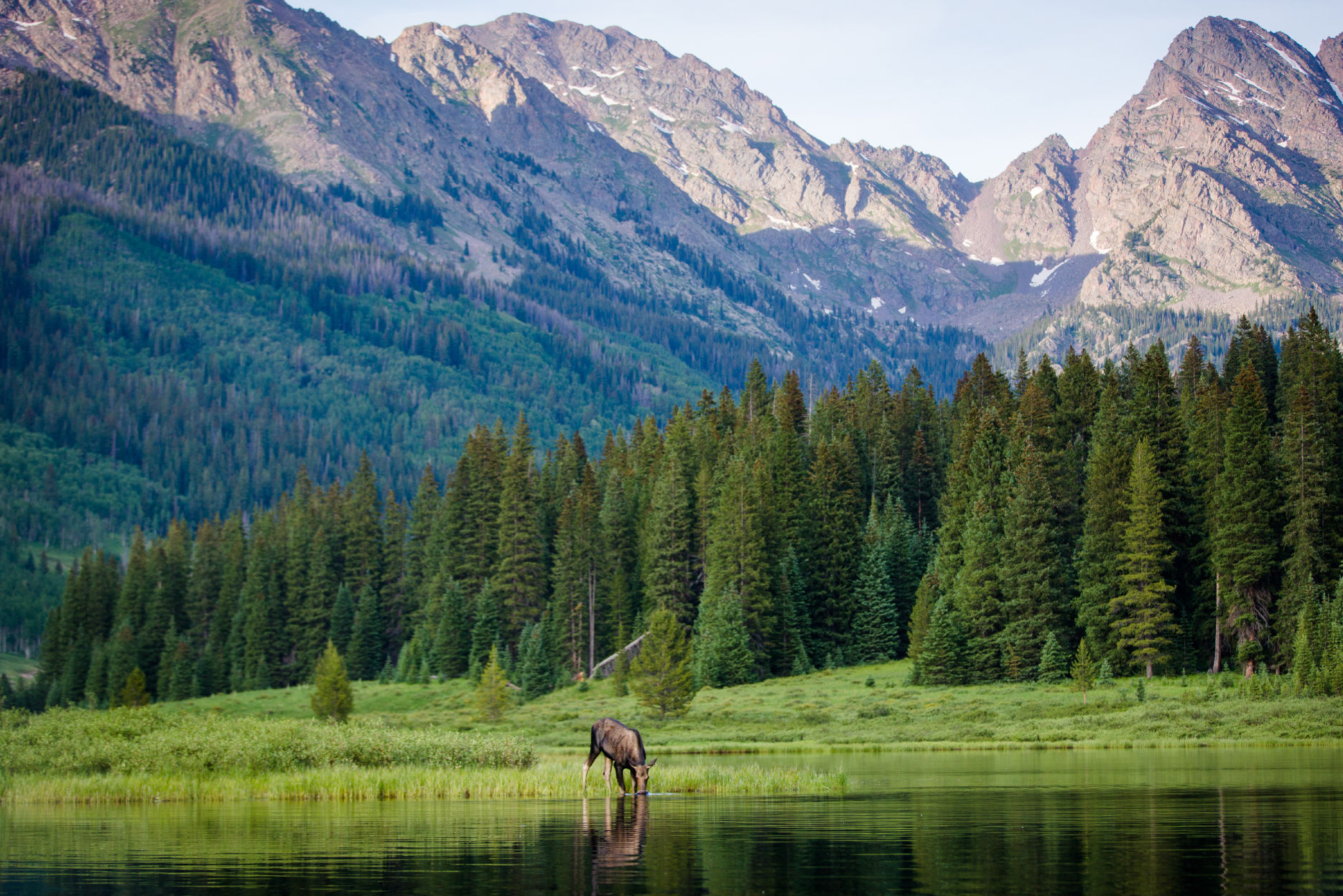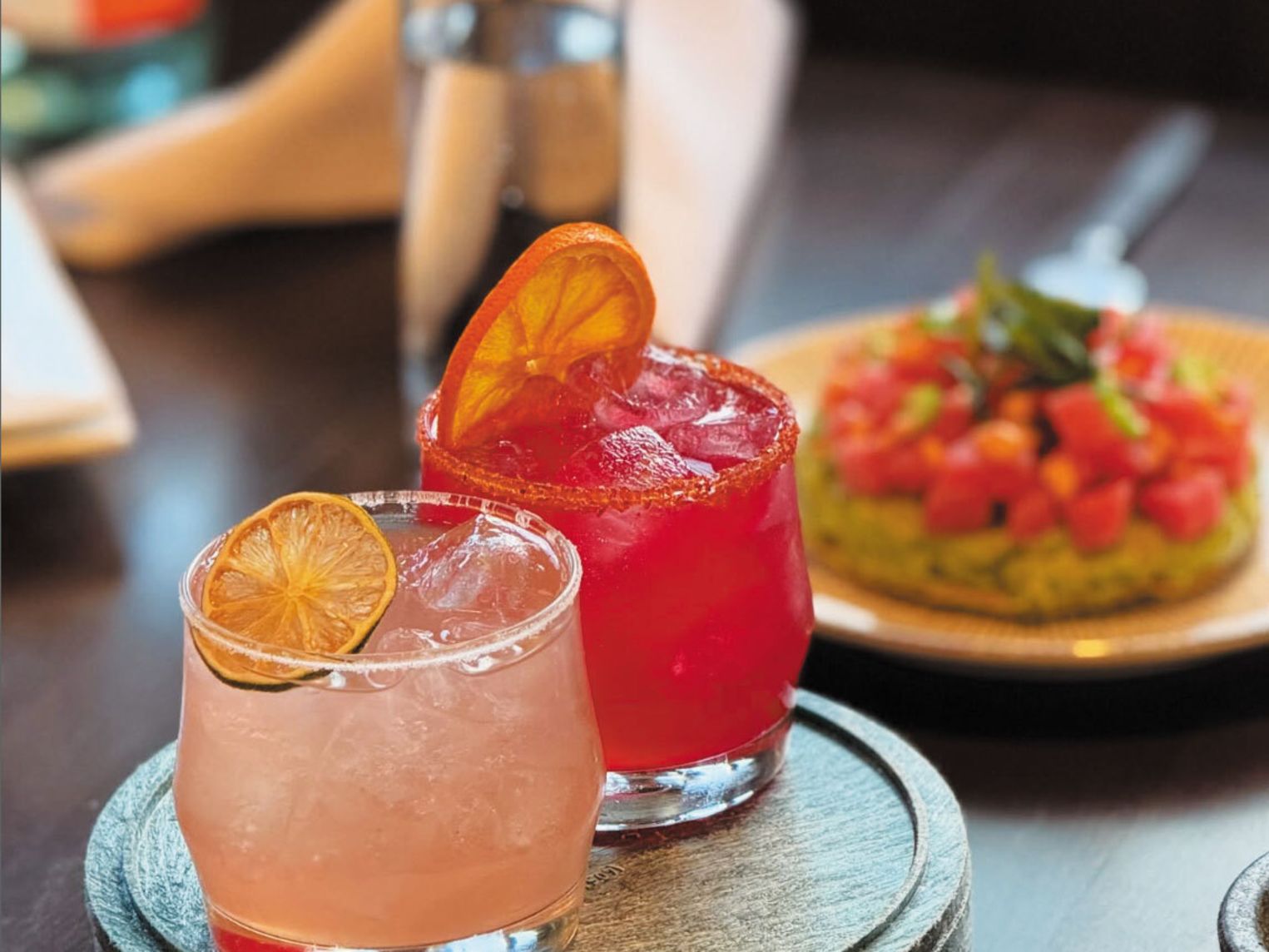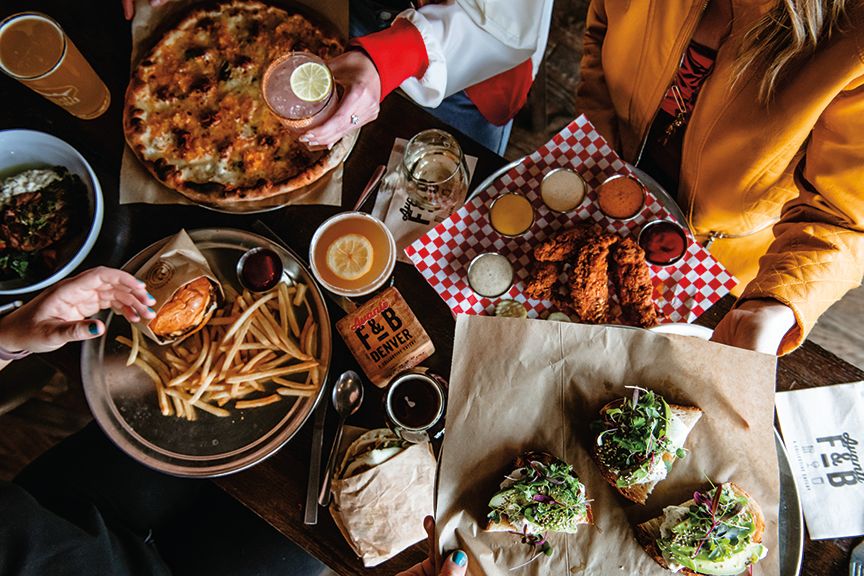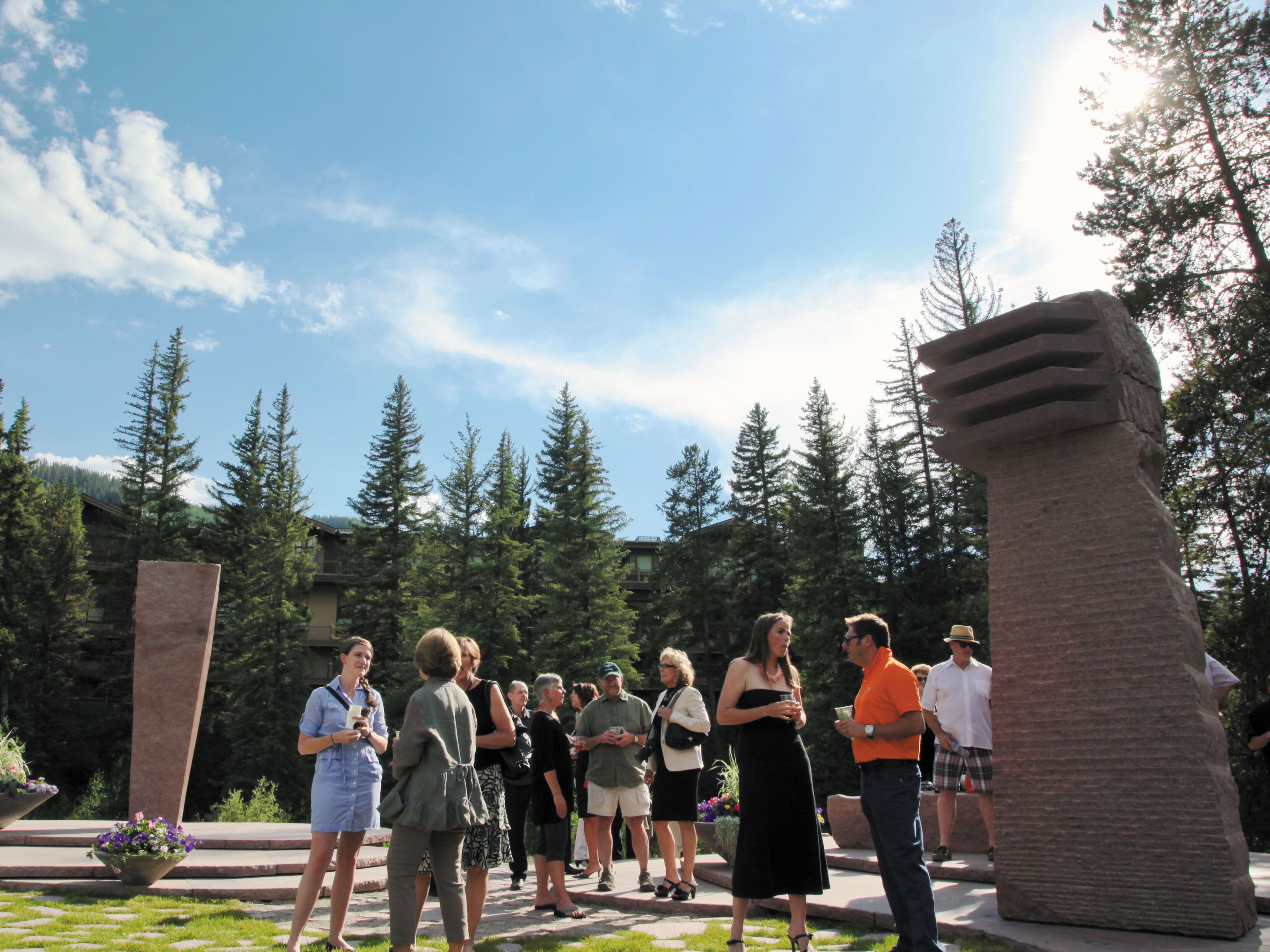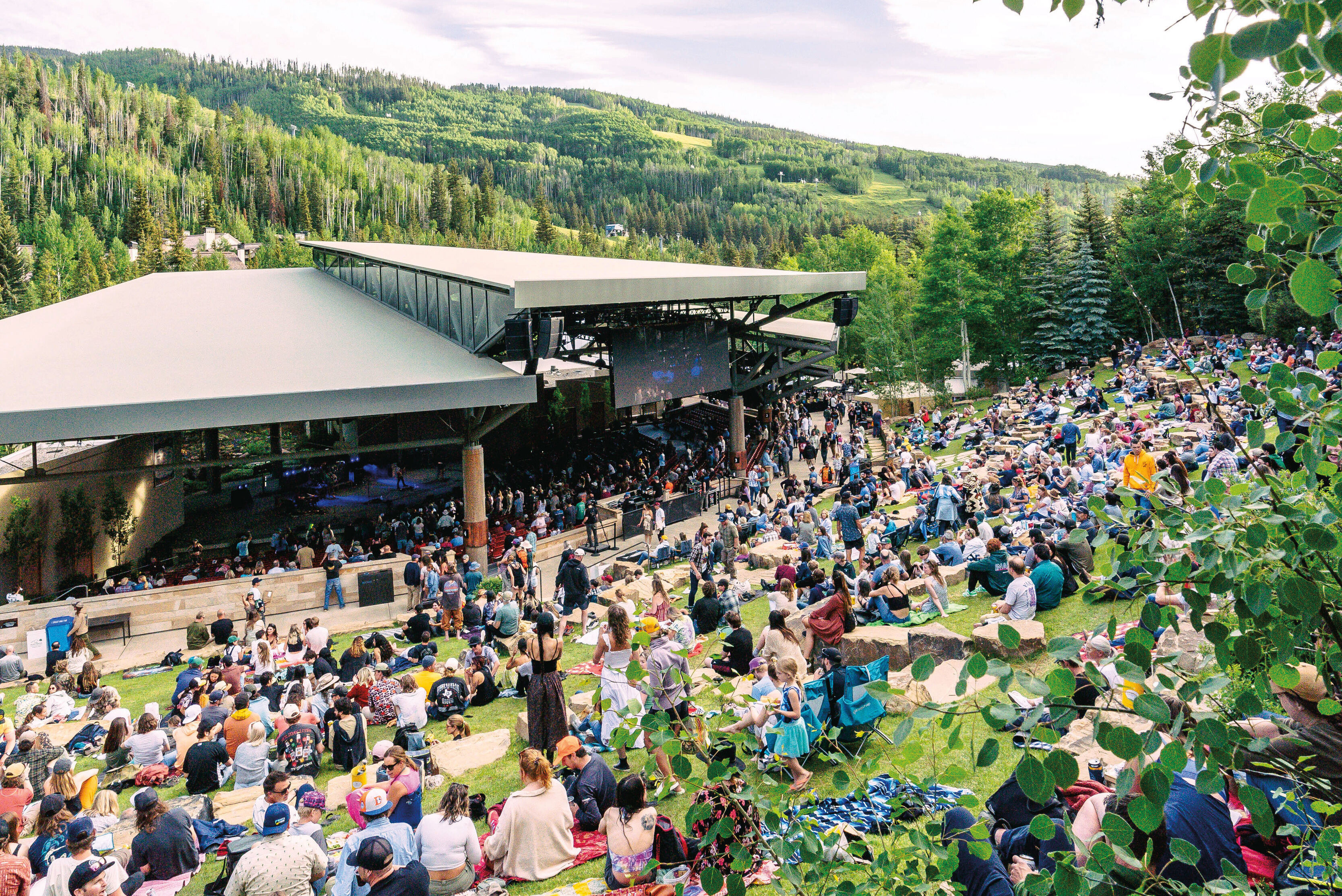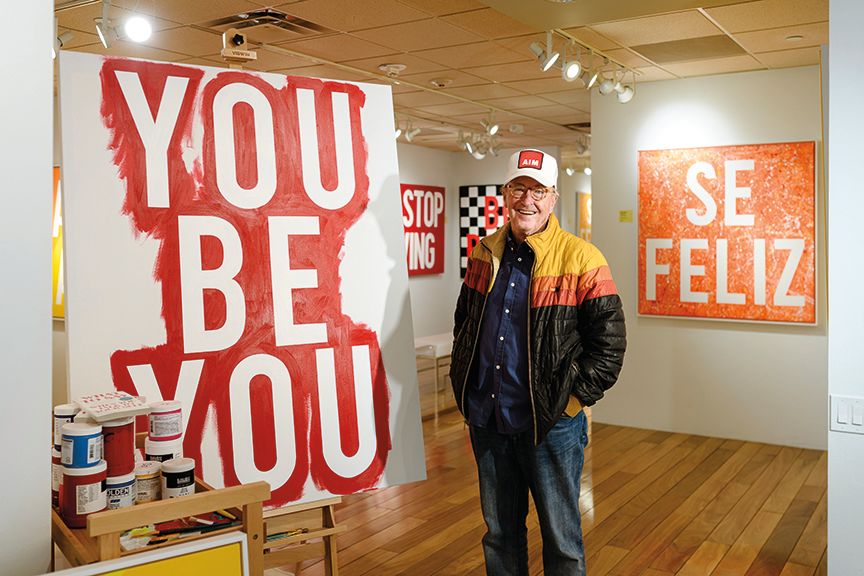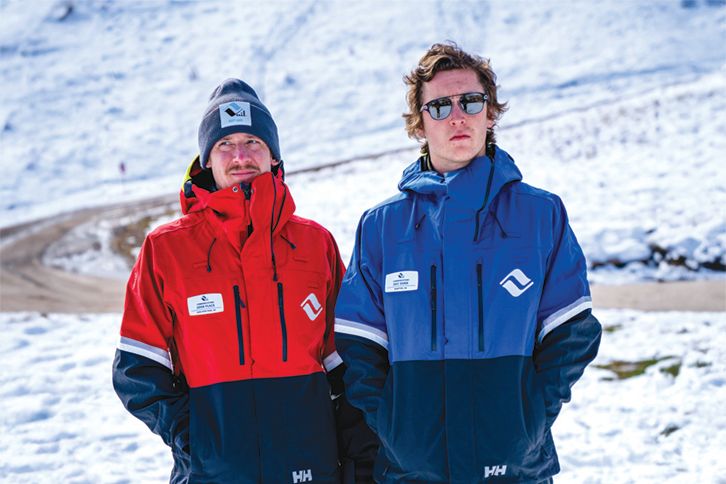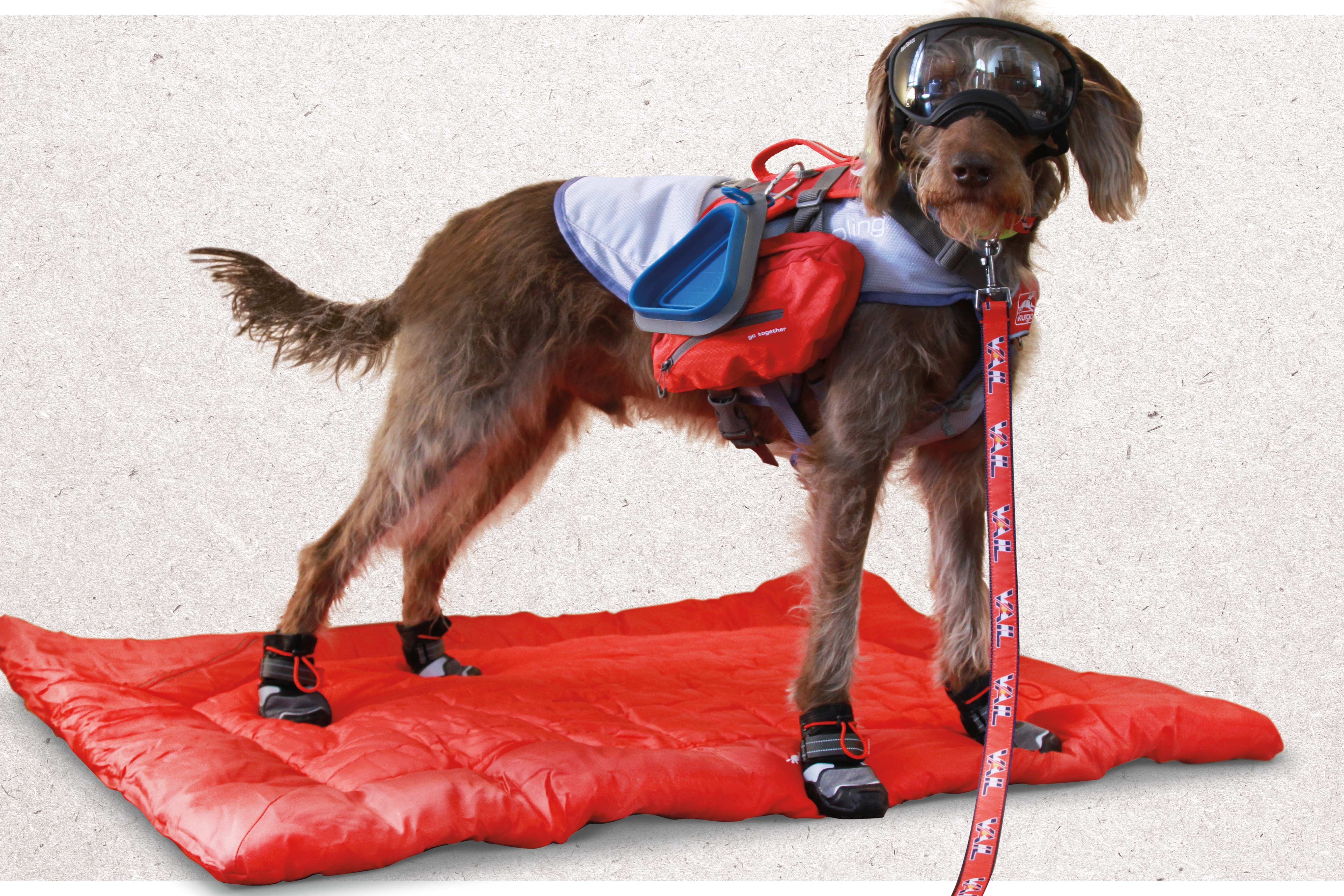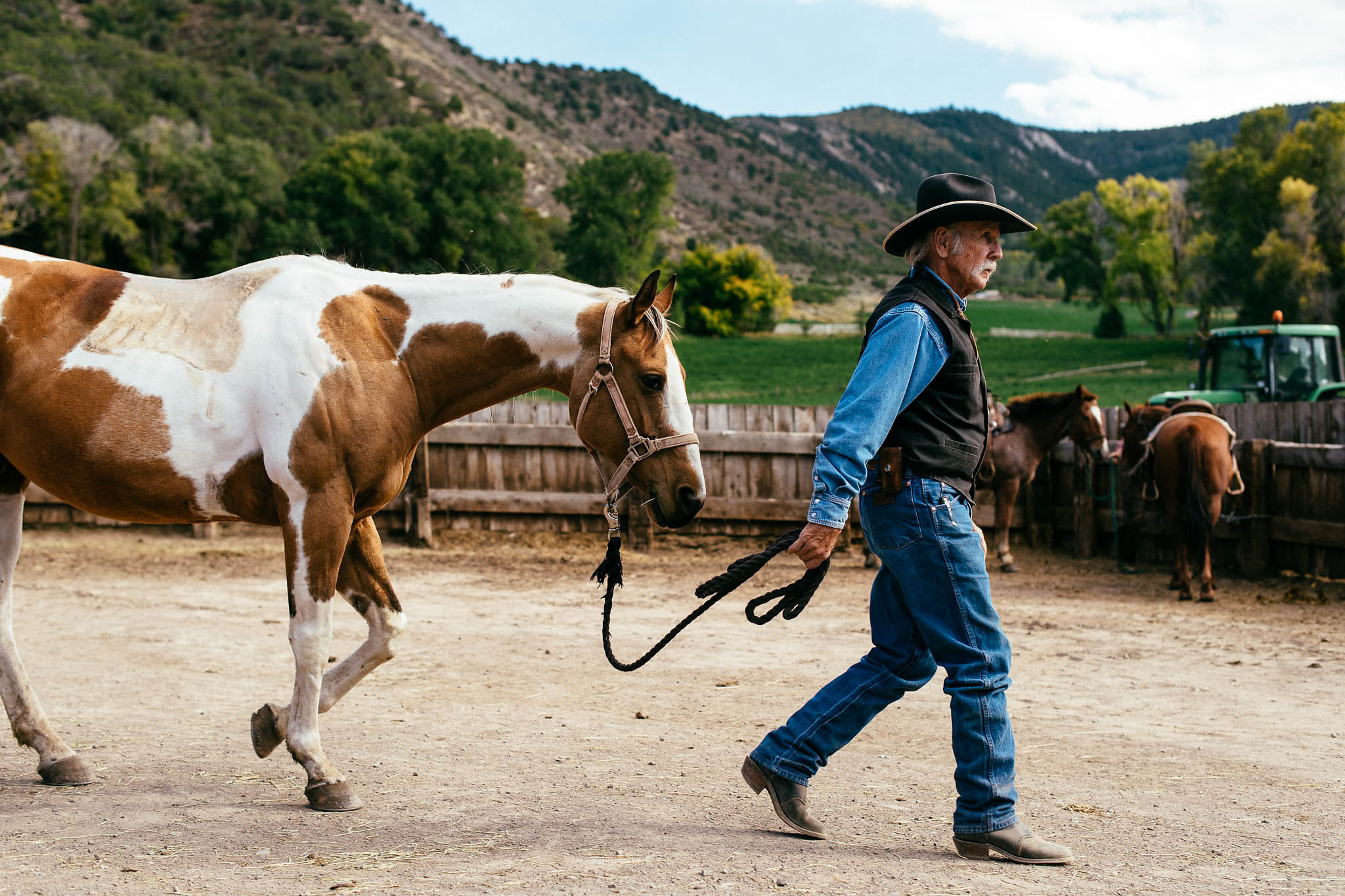
A Time-Traveling Adventure at One of the Last Working Ranches in the Valley
Just before nine on a moody July morning, a Polaris Ranger rolls to a stop outside my cabin high above the Colorado River, 50 miles west of Vail. I had heard Jim Bair was a large man, but when he unfolds himself from the cab of his muck-spattered ATV, he towers over me like a redwood, all six-foot-seven of him, and extends a calloused hand that envelops mine like a catcher’s mitt gloves a ball.
We are standing above the eastern mouth of Glenwood Canyon, as clouds cling to distant ridges and steam rises from the earth, the final exhalation of a downpour the prior evening that turned all the roads into soupy messes. “That’s definitely the most rain we’ve had all summer,” says Bair, the 36-year-old manager of Bair Ranch, one of the valley’s few remaining family-owned working ranches, which his great-grandfather homesteaded nearly a century ago. Dressed in gray work pants, a plaid shirt, and rubber boots, Bair beholds a landscape that’s dramatic to me but familiar to him, a poetic composition of alpine forests, flowing water, and vertical rock walls that bracketed his childhood. “But the sun’ll come out and it’ll tack up.”
We climb into his Polaris and commence what promises to be a long day for Bair. A corporate group of 50 will be here soon to partake in a host of touristic adventures, from horseback rides to Jeep tours to steer roping. There are wranglers to manage and guests to greet, and because Bair’s wife, Autumn, a hospital ob-gyn nurse, is working today, he is also in charge of their three kids: a pair of 7- and 5-year-old sons named Axel and Bridger, and a 16-month-old daughter, Harleigh. He has left them at home at the base of the ranch to tend to his morning chores, checking in every half-hour or so.
When I ask Bair to describe his job as we bump down the road, he says, “I just take care of problems every day. Don’t have time to take care of everything, so I take care of the most emergent. Triage, every day.”
Currently, we are en route to fix a broken water line. An eight-inch-wide PVC pipe cracked lengthwise above an alfalfa field, and Bair can’t irrigate the crop or get water to the horses below until it’s replaced. Jim Bair, the eldest of six children born within a decade to Craig and Doris Bair, played football and basketball on a full scholarship at Western State in Gunnison. He has two degrees, one in business and one in Spanish. All of his siblings also work for the ranch—his equally colossal brothers, Jeff and Jason, run the sheep side of the business, while his sisters, Vaniel, Kacey, and Jamie, assist with ranch operations. Jim and his family, as well as Craig, are the only Bairs who currently live on and work the land full-time.
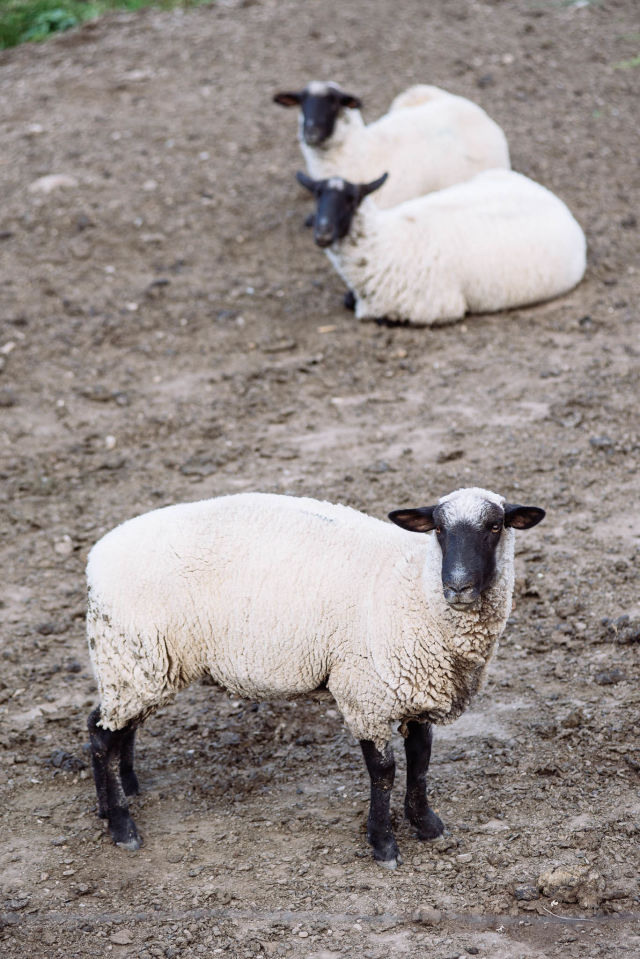
Three of the 12,000 sheep on Bair Ranch, one of the last family-owned working ranches in the valley
Image: Ryan Dearth
The ranch, about a 15-minute drive from both Gypsum and Glenwood, encompasses some 4,800 acres that are protected in perpetuity under a landmark conservation agreement prohibiting the land from ever being subdivided or developed into another golf course, gated vacation home community, or resort village, like the Nottingham holdings that birthed Vail and Beaver Creek. Craig and Doris sagely made that deal nearly 15 years ago, in part to generate capital for the family and allow the heritage tract to remain a working ranch, both as a lamb and wool producer and an agritourism hub. You need not be a cowboy to know working and family ranches are dying, either due to financial hardship or lack of interest from the next generation of would-be ranchers. But the Bairs have set theirs up to last. As a condition of the agreement, each Bair child was allowed to pick out a homesite, which gives Jim hope that he will be joined by his siblings in due time. Until then, it is his responsibility to stay on top of each day’s tasks.
To that end, he meets his assistant, John Brooks, next to a corral at the base, where the air is perfumed with hay. They discuss logistics for the corporate group. Bair seems flustered. “What day is it today?”
“It’s the weekend,” Brooks says. “Saturday.”
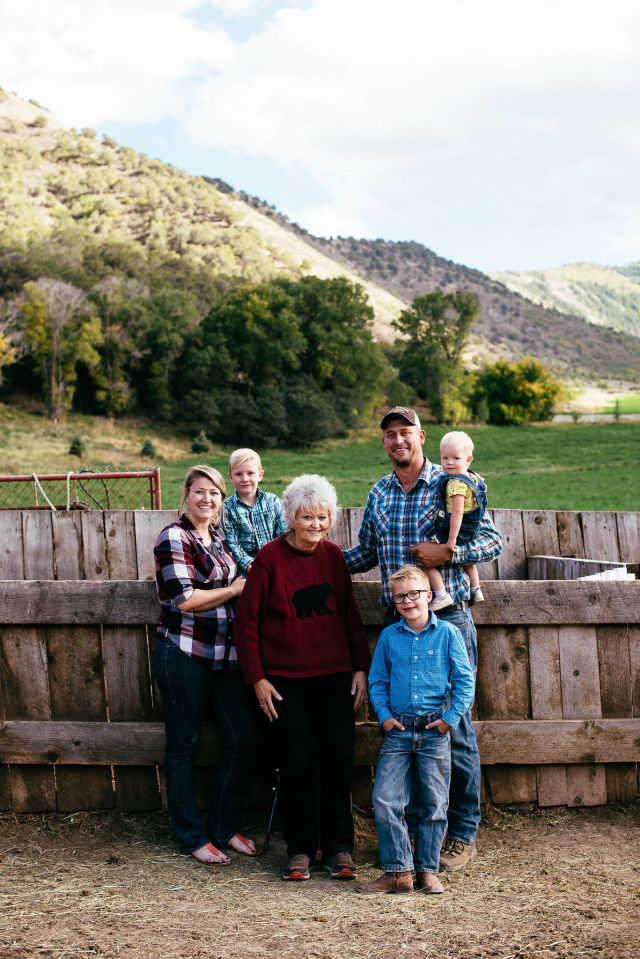
The Bair family (clockwise from left): Amber, Bridger, Doris, Jim, Harleigh and Axel
Image: Ryan Dearth
Sheep ranching, which has paid the Bairs’ bills for five generations, is an early-morning business; some days, Jim, like his brothers, is out the door by 6 a.m. and gone until 9 or 10 p.m. Now that he tends to tourists more than the family’s 12,000 sheep, his life is slightly more predictable. But, as he points out with a straight face, “A lot of times, it’s easier dealing with livestock than people.”
He pulls up to his house, next to an idle swing set and lemonade stand, and heads inside to check on his brood. When he returns, he is carrying Harleigh in his arms, and Axel and Bridger trail close behind him. Everyone climbs into the utility vehicle. Harleigh, barefoot and wearing a pink Carhartt sweatshirt, sits on Jim’s lap cooing as he motors up the mountain.
“Dad, did you see that deer I spied?” one of the boys says from behind us.
“I did.”
“I spied one animal, then I spied two animals.”

Horsing around after a backcountry ride
Image: Ryan Dearth
The brothers are still arguing over who saw which deer first when we arrive at the cracked pipe. Jim climbs into the cab of a backhoe, again placing Harleigh in his lap. He swats horseflies with his ballcap as his bucket chews the earth around the PVC. It is 10 o’clock. The sun is blazing. He looks at me and grins.
“If this place ever sells,” he says, “you probably won’t be coming out here to talk to the owner while he digs a hole with his backhoe to fix a broken water line.”
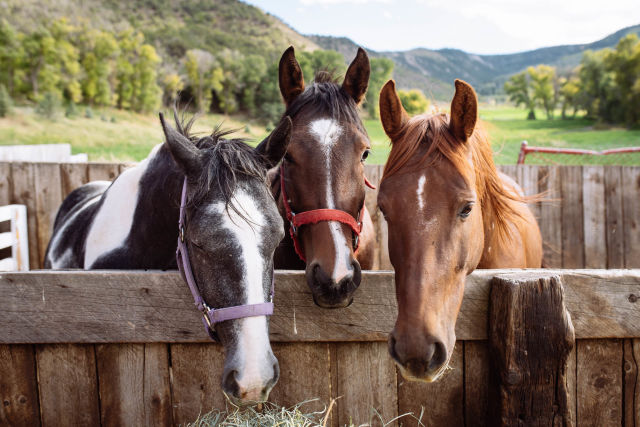
Image: Ryan Dearth
How the Bairs came to sheep ranching is a story of bad luck and, judging by their longevity, fate. Jim Bair’s great-grandfather was born in Ohio but left home as a teenager for Texas. From there, he boarded a train and headed north but got locked inside of a boxcar. When he finally emerged, the train had stopped in Salt Lake City. He took a job working on a sheep ranch, married, then moved to Colorado to homestead and begin compiling the plots that would become Bair Ranch.
Jim’s grandfather expanded the ranch when he took it over. “He had a good banker, and the banker would tell him if a ranch was for sale so he might add to his holdings,” Jim says. “But that was back when you could buy ground. You can’t buy ground anymore.”
When highway planners routed Interstate 70 through Glenwood Canyon, they capped the Bairs’ hot springs and built the freeway on top of it—against the family’s wishes. Jim appreciates the highway, if not the fact that 15,000 people drive by his house every day, but his wariness of big government lingers. “My grandfather offered ’em for free to give ’em the ground up closer to the hillside, so they wouldn’t take his water and his hot springs. But they didn’t care,” Jim says. “All that stuff kinda sticks in my craw a bit.”
The family sold about 8,000 lambs last year, and sheep will always be the ranch’s primary source of revenue. But Jim’s father Craig decided nearly two decades ago that he needed to diversify their business if the ranch was going to support his children’s children. So he held a series of meetings with his six kids to see what they wanted to do.
“I’d take ’em in the pickup somewhere, individually, and tell ’em that we could sell the place and I could give ’em a lot of money and they could go do whatever they wanted in life,” Craig says. “Or, we could stay here and work. I didn’t say we’d be rich, just that we could stay here and work. And each one of ’em thought about it for a while, and each one of ’em said they’d just as soon stay here and work.”

The ranch’s next generation shadows their father during their chores
Image: Ryan Dearth
But it wasn’t that simple. To keep working the land, the Bairs needed capital—but they didn’t want to break up the ranch, which was valued at more than $20 million. So the family turned to the Boulder-based Conservation Fund, which partnered with Eagle Valley Land Trust to create a conservation easement (using private donations leveraged with local and federal grants and state lottery funds) to permanently protect the ranch from development. The BLM now manages a 512-acre tract along three miles of riverfront, which is open to the public, and the Bairs used income from the arrangement to bolster their commercial holdings and solidify the ranch’s future.
“That transaction is still one of the model conservation transactions in our state,” says the Conservation Fund’s Christine Quinlan, who helped broker the deal. “It’s such a significant piece of property—it defines the character of the entrance to Glenwood Canyon. So to have that ranch be anything other than a preserved property would be hard.”
In 2010, the Bairs partnered with Ken Murphy, a longtime outfitter from Glenwood Springs, to expand their guest ranch operations and further augment their sheep business, which will always operate at the mercy of the market and nature. They started with 7 employees; now they have 150. Between two site-specific brands, Lakota Guides in Vail and Glenwood Adventure Company, they offer one-stop shopping for tourists in search of the real West.
“The most important part is maintaining that family ranch experience,” Murphy says. “We didn’t want to be a Disneyland. We wanted people to get the true ranch experience—see the sheep. We don’t hide the farm machinery. Our roads aren’t paved. It’s a working ranch, it’s not a made-for-tourist facility.
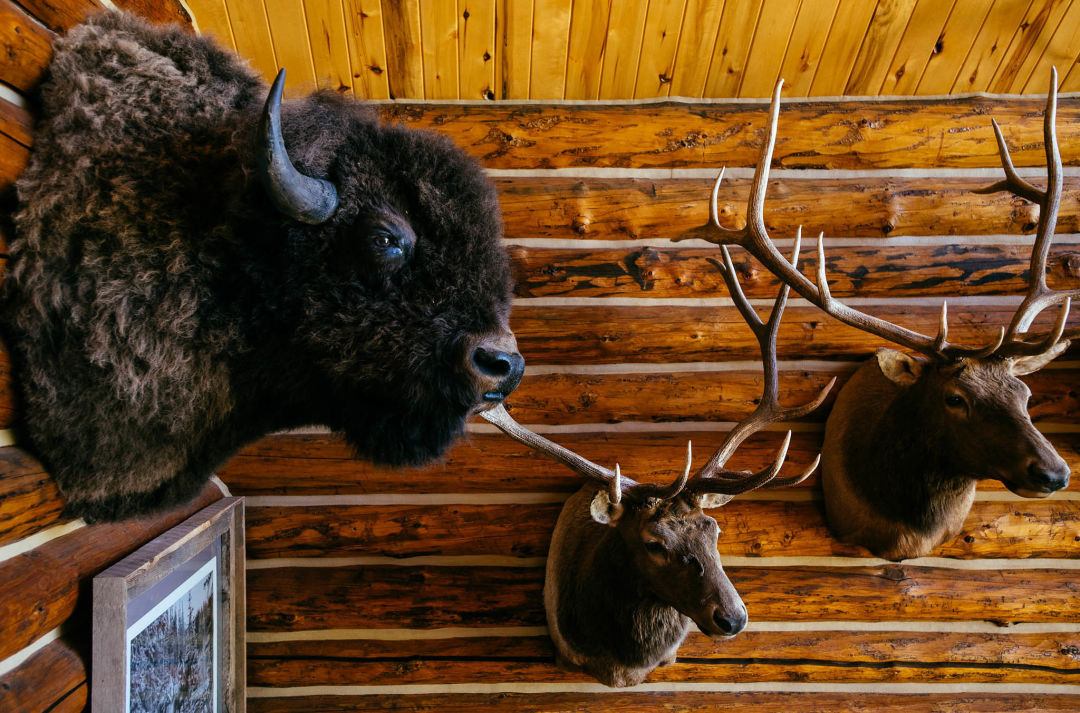
Hunting trophies in one of the guest cabins
Image: Ryan Dearth
The easement’s most underappreciated benefit is that it lets the rest of us actually live on the ranch, for brief periods anyway. The night before I met Jim Bair, I followed his assistant, John Brooks, up a dirt road to the Big Horn Cabin, a tiny, one-room hut with a porch that overlooks the sprawling valley. The Big Horn is one of five “primitive” cabins on the ranch—no lights, power, or running water. Each requires a five-night minimum stay … and a willingness to walk down a hill to the bathroom.
That night, my wife and I and our two-year-old son were the only ones renting a cabin. We sat on the porch and watched the storm approach, then unleash upon us. A group of visitors enjoying a chuckwagon dinner scattered to dodge the drops. Suddenly the only sound for miles was that of water hitting earth.
Alone inside the cabin, it was easy to imagine the Bairs as homesteaders falling in love with this valley, with the aspen groves and meadows devoid of any signs of civilization, a most stunning place to live and work. The rain continued until nightfall, when we were tucked in our bunk beds, nodding off.
The following day, after Jim Bair drops his kids back at home, we run into his brother, Jason, in the driveway. Jason is picking up salt and groceries for his sheep camps. His dog reclines on bags of salt. “Right now, I got 4,000 sheep up on the Flat Tops,” he says. “That’s where I gotta go today to move a couple herders’ camps, take ’em their water.”
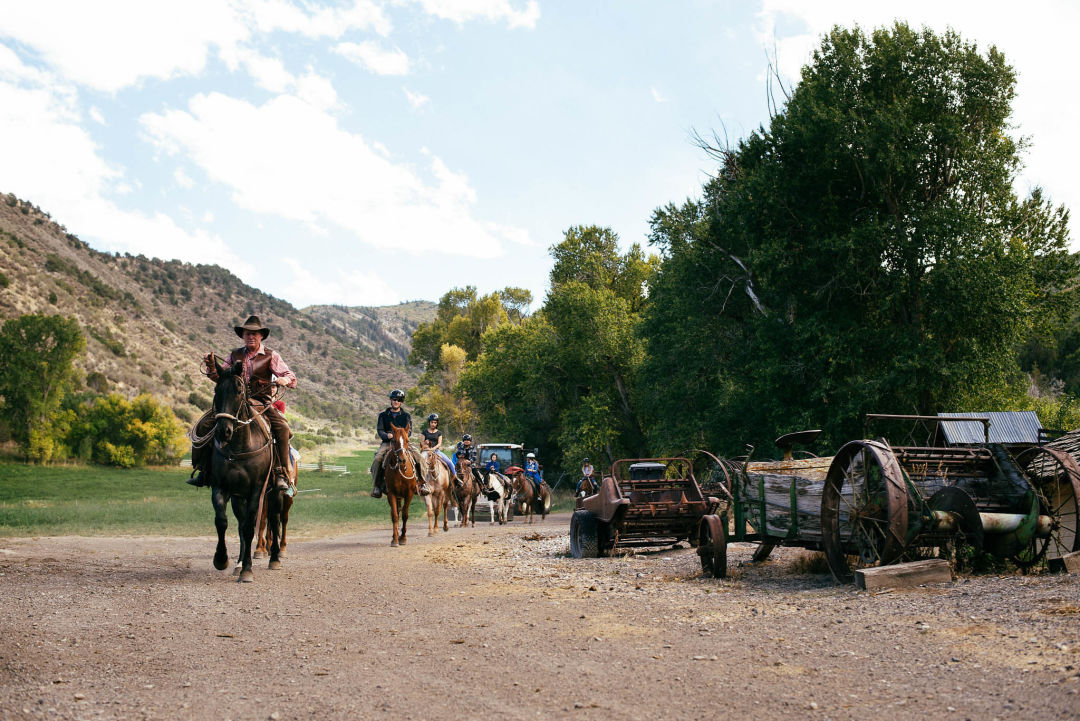
Image: Ryan Dearth
Suddenly, their father, Craig, rolls up on an ATV of his own. Barrel-chested with bushy black eyebrows and gray stubble, the Bair patriarch wears a camouflage shirt and camo cap. He laughs when Jim asks if he’d like to speak to a reporter. “No.”
Jim leans over to me. “Dad’s real shy at first, but if you get him going he’ll talk your ear off”—a promise that proves true 15 minutes later.
The Bairs estimate they lose 1,000 lambs to coyotes in Utah, where the herd spends the winter and spring, then another 400 to bears in Colorado before they go to market each fall. Hence, what happened yesterday, when Craig found three rams most likely butchered by bears, wasn’t unusual. But the 65-year-old rancher can’t get over the gory carnage of the scene, which he describes in detail.
Jim looks at me. “Your upvalley readers probably don’t want to read about that.”
Make no mistake: the Bairs, like a lot of agricultural families, feel an ever-encroaching pinch of pressure to disrupt their traditional ways, and they are wary of outsiders. Recreationists and environmentalists often oppose their federal grazing permits, in particular.
“In lots of places, there are pushes to get ranching kicked off these grazing allotments in the West,” Jim says. “Well, ranching in the West cannot exist without public grazing. Very few places have tens of thousands of private acres to run their livestock on.”
He pauses to collect his thoughts and measure his tone. “If we do decide to kick permittees off of Forest Service and BLM lands that they’ve been on for generations—a hundred years or longer—what are we going to do? How are we going to raise our food? It seems a little conflicting sometimes. We would like to eat grass-fed, we would like to eat organic. But it takes acreage to produce that. It takes grass to have grass-fed beef! If we want to have natural, organic Colorado lamb, we need the mountains to put those sheep on.”
More than two million acres of private land sits in conservation easements in Colorado—perhaps none prettier than Bair Ranch. Meanwhile, the American Farmland Trust estimates that about 40 acres of agricultural land is lost each hour. “And then you look at Colorado, and more than 80 percent of private lands are owned by farmers and ranchers,” says Quinlan of the Conservation Fund. “There’s a lot of acreage at risk. Over the next 20 years, there’s going to be a lot of change in those lands, so there’s a lot of opportunity.”
The alfalfa field at Bair Ranch is green and lush, with stalks rising halfway up our shins. The Bairs and I discuss the future of American agriculture, and the waning interest among younger generations. Recently, five-year-old Bridger has been saying he wants to be a farmer. “You don’t hear that much,” his grandfather says.
The stakes are higher than people realize, Jim adds. “If we don’t have young people coming into agriculture, we’re going to see a huge shift in how this country gets its food. And I’m not convinced that we want to be dependent on other countries for our food supply. You really want to control people? You start controlling their food supply.”

The 4,800-acre ranch, located between Gypsum and Glenwood Springs, is protected by a landmark conservation easement that forever prohibits development.
Image: Ryan Dearth
As a family, the Bairs produce nearly two million pounds of food and fiber each year. They feel like they contribute to America in a way that most do not. They take pride in generating a domestic product that supplies domestic customers.
And yet they lament the inaccessibility of their field and lifestyle—which can only be described as endangered. Each time a ranch’s matriarch or patriarch passes away, as Doris did in January, it becomes harder to carry on. And once a ranch stops working, it almost certainly is done for good, destined to become a tax write-off or trophy home site (witness the impending sale of the 20,000-acre Nottingham ranch near Burns, or the 27,000-square-foot mansion—with helipad and observatory—that Discovery CEO Jim Hendricks erected on the former West Creek Ranch near Colorado’s Utah border, on the market for $150 million). I ask Jim Bair if that breaks his heart at all.
“Well,” he sighs, “it does and it doesn’t. I’m here to try to hang on. And I hope my kids will try to hang on. Everybody’s faced with choices. And the ranching and farming industry is a tough business. There’s lots of reasons that people get out, and I don’t judge ’em for it.
“For me,” he continues, “it’s just kind of something that runs through my blood. I have a lot of respect for my ancestors, so I have a connection with the land. My grandfather was here, my great-grandfather was here, my father spent his life here. That’s good enough for me.”
Keys to the Ranch
If you want to stay on Bair Ranch (970-945-9773; highcanyon.com), you have a few options. The most deluxe is the Golden LeGrande Lodge, a three-bedroom, 2,800-square-foot home (with another 2,000 square feet of deck space) that sleeps a maximum of 12 but is most comfortable for 8; rates average $500/night. Smaller, more-rustic options include Caribou Cabin, which sleeps 6, includes a refrigerator and cooktop, and rents for $249/night; and several rustic cabins like the one mentioned in this story that sleep 4 and rent for $69/night. All lodging options require a five-night minimum stay. As for activities, you can book Jeep and ATV tours, horseback rides, cookouts, raft trips, and big-game hunting excursions—even massage.







